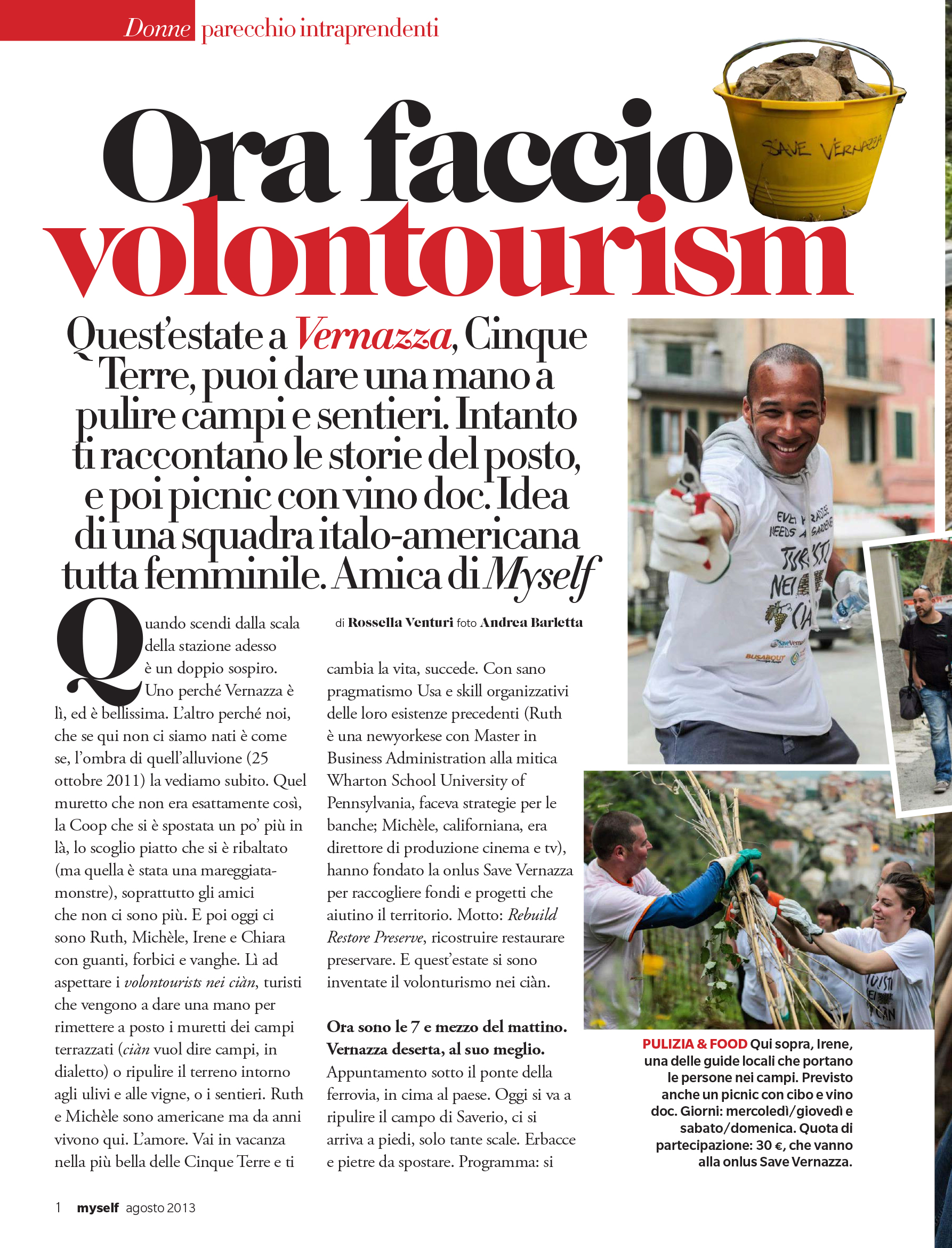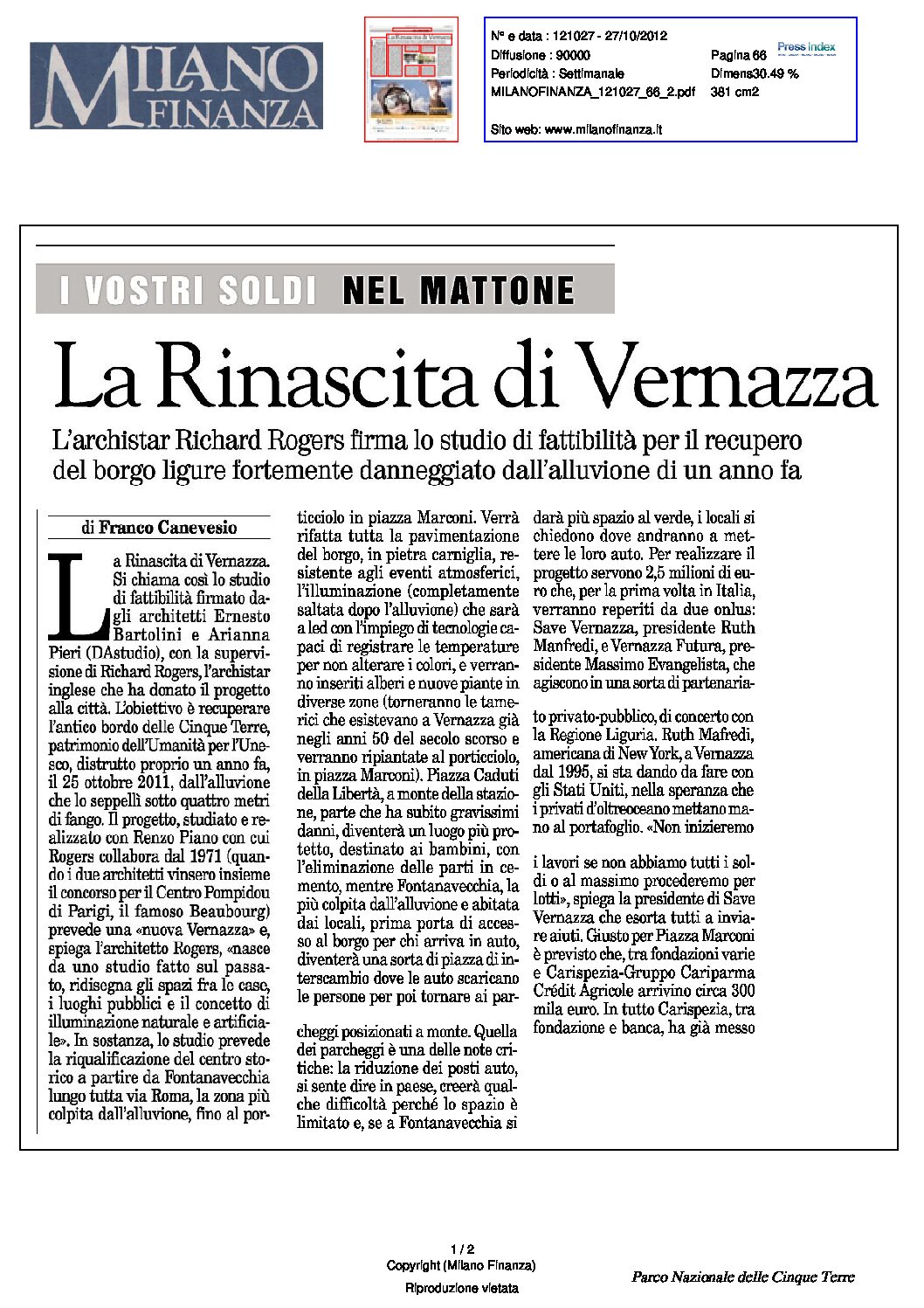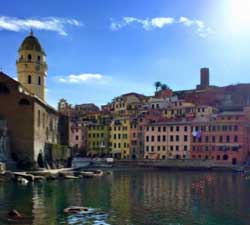Cinque Terre’s Comeback: How Vernazza Rebuilt Itself
When a biblical storm rolled across the Cinque Terre, northwest Italy’s string of five historic coastal villages (Porotfino, Monteroso, Vernazza, Corniglia, and Riomaggiore), last October, the floods carried fishing boats all the way to Morocco—and almost wiped the prettiest village, Vernazza, off the map.
When a biblical storm rolled across the Cinque Terre, northwest Italy’s string of five historic coastal villages, last October, the floods carried fishing boats all the way to Morocco—and almost wiped the prettiest village, Vernazza, off the map. The silver lining would be easy to miss, but the town has somehow found it: Resilient Vernazza has reinvented itself with the help of architect Richard Rogers. Townspeople began by repaving the central Piazza G. Marconi with ancient stones, reinforcing the main corso, and creating public sitting areas. They then moved on to restoring hiking trails (almost all have reopened), rebuilding a beach by the harbor that had eroded in the 1970s, and revamping formerly sodden businesses: Gianni Franzi is serving just-caught anchovies in the new central square (entrées from $10), and La Cantina Molo’s Alberto Basso is involved in replanting the trees used to make the Cinque Terre olive oils sold in his redone shop (Via Visconti 27). The best place to stay is La Malà, perched above the town, with sweeping views of the sea (doubles from $208). We caught up with Ruth Manfredi, Michele Lilley, and Michele Sherman, co-founders of Save Vernazza ONLUS, to find out what it was like just after the disaster—and what the future of the village looks like.
What was your first impression of the damage caused by the floods?
Michele Lilley: When I looked out the window from my home above the piazza I saw members of the community lifting rocks and shoveling mud and debris. I saw people helping others get back to their homes on the other side of town via a rope held at both ends by townspeople in order for them to cross the running water. When I came down into the piazza and looked up back towards Via Roma, the main street in town, I saw nothing but hard packed mud and debris that engulfed the town up to the first floor of the buildings. I could no longer see up the street—I only saw dirt, water, rocks, cars, twisted metal, and boats all around me. It was surreal. We all tried to imagine what was under all of that earth—what was left of our livelihoods and our homes. We wouldn’t know until almost a month later when we dug ourselves out to street level.
Ruth Manfredi: My heart broke when I saw Vernazza for the first time two days after the storm. I had heard some of the news but was unable to contact anyone in Vernazza since all communications were still down. When I arrived by boat—the only way to get to Vernazza—I was shocked to see that the entire harbor was gone, covered by mud. It was incomprehensible. As soon as I disembarked, I joined the long human chain from the boat to unload all of the food, water, clothing, and emergency equipment that had been donated to help the people in Vernazza face this emergency. Once in town, I found myself walking on top of the mud and rubble, and I felt an odd sense of confusion, since I was walking on top of people’s destroyed businesses and homes. It felt unreal and deeply disturbing. I will never forget the anguish on the face of the owner of Vernazza’s La Madonnina market and how she collapsed crying in my arms after seeing her business literally buried by the floods. She said, “How will we ever rebuild? How will Vernazza ever survive?” I was thinking the same thing.
What will it take to rebuild the town?
Manfredi: I realized that the road to rebuilding Vernazza would be long, hard, and complicated. Yet, thinking about the way people were working together to unload the emergency supplies or to dig out the piazza with their bare hands, or the grace and generosity of spirit demonstrated to me by a woman whose children had lost their businesses and barely escaped being killed by the flood, I knew that Vernazza would survive and rebuild thanks to the strength of its people and its community. I also decided that I had to do something. The immensity and severity of the situation was too great to think that government agencies alone would be able to cover the costs of the cleanup, let alone help Vernazza rebuild. That day, the seed was planted and Save Vernazza was born. Because we can all make a difference.
What safeguards have been put in place for future floods?
Michele Sherman: Geologists and engineers have been brought in to assess the damage and provide guidance on how to safeguard the village from the threat of future occurrences. Consequently, the canal that leads into town and down the main street—which broke its banks on that fateful day—has been expanded and widened, and “debris flow” systems have been put in place that will allow for the passing of water but will block the flow of debris should landslides or mudslides occur. Additionally, the canal will once again be allowed to run its natural route, having been altered years ago for the construction of the road and parking areas. Instead of the canal being altered to suit the road and parking, now the road and parking will need to heed to Mother Nature. Efforts are ongoing to stabilize slides among the hillsides, but work on the largest and most precarious has been completed with anti-landslide barriers erected. All this will change the look of Vernazza’s roads and hills somewhat, but the town’s security is of utmost importance.
Ruth Manfredi: The Rogers’ Plan for the Reconstruction and Requalification of Vernazza has two goals: to maintain Vernazza’s unique architectural heritage while improving Vernazza for the future. Some examples include: energy-efficient lighting; burying the electrical wires; creating a cohesive plan for the movement of people through the town; creating architectural seating out of natural materials; planting native trees to create greenery throughout town; hiding the electrical and power boxes on the buildings; creating pavement for the central streets; and building a piazza that is visually pleasing, durable, and that creates a harmonious flow throughout the town.
To contribute to the reparation costs, check out savevernazza.com.
Photo at top: Anthony Dell’Ario/Getty





